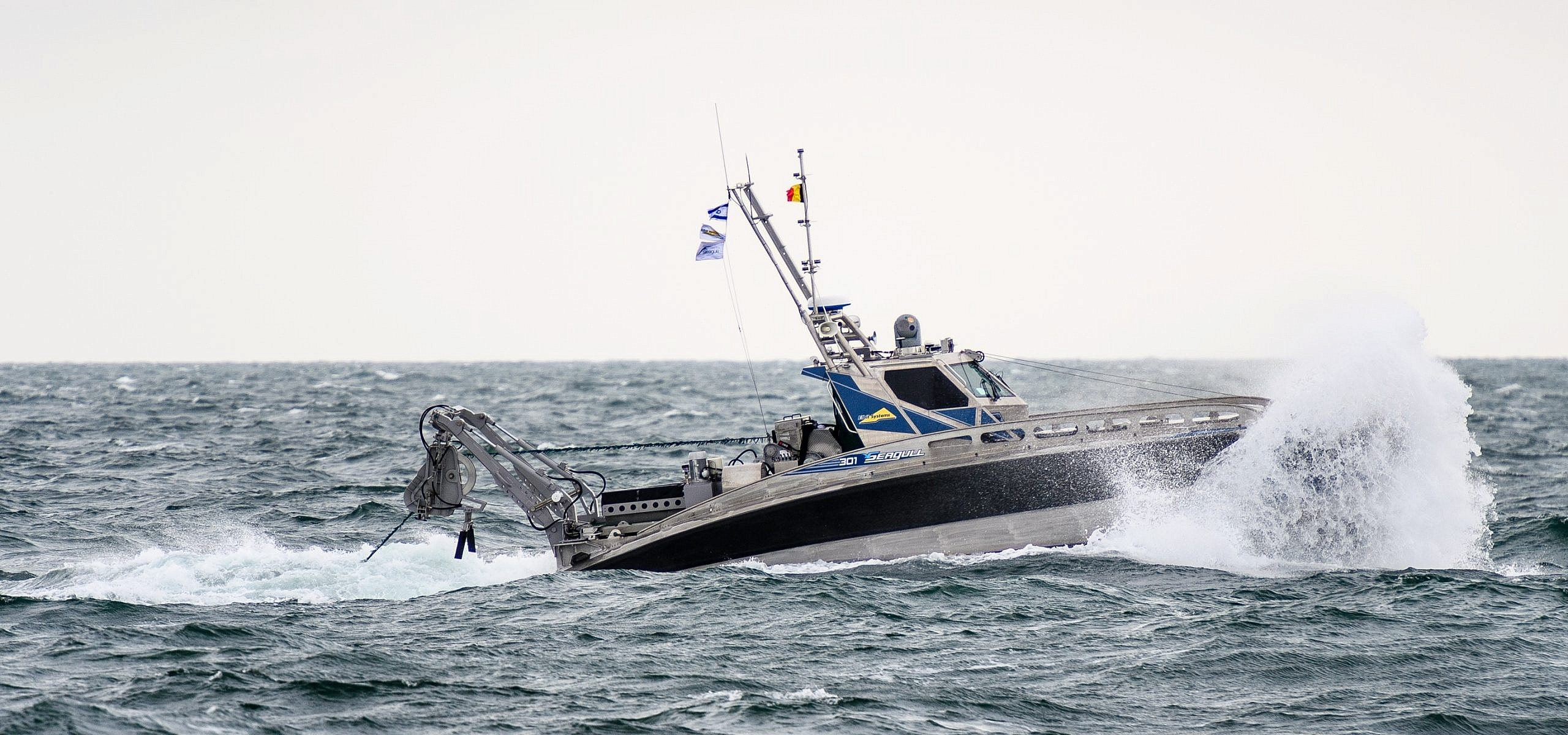
The “Seagull USV,” made by Elbit Systems, provides naval forces
with major advantages in their ability to patrol, monitor and neutralize threats, both on the sea surface and underwater.
During the recent escalation between Hamas and Israel, the terrorist organization based in the Gaza Strip launched an ambitious attempt to damage a critical Israeli infrastructure target.
According to the Israel Defense Forces, Hamas’s naval division attempted to send a guided torpedo, also known as a small suicide submarine, from the Gazan coastline towards an Israeli offshore gas rig in the Mediterranean Sea.
With around 70 percent of Israel’s electricity consumption originating today from natural gas, it is not difficult to imagine why Hamas was looking for a “victory” picture through such an attack.
Israeli intelligence and airpower came together to detect and foil the attack before it could proceed, destroying the explosive vehicle as it was preparing to move off the coast.
The Seagull USV provides naval forces with some major advantages in their ability to patrol, monitor and neutralize threats, both on the sea surface and underwater.
“The Seagull’s ability to provide solutions to different kinds of missions simultaneously does not exist elsewhere,” an Elbit source told JNS in recent days. “It can stay at sea for more than four days, with endless communication ranges because some of its communications are satellite-based.”
The 12-meter-long (39-foot) craft can be deployed from a port or mother ship. In January, a large Asia-Pacific country signed a contract with Elbit for the supply of the Seagull.
Elbit views the contract as the start of a long-term relationship with that client. “We are beginning to position ourselves well in the USV market,” said the source.
In terms of capabilities, the Seagull can conduct fully autonomous patrols of ports, rigs or carry out force protection missions at sea. It receives data from an array of onboard sensors, primarily advanced sonar detectors, and from external sources.
It can be armed with its own weapons stations, machine guns, heavier guns, torpedoes and underwater depth charges. It can also carry smaller underwater robots that perform a range of combat missions, like destroying sea mines.
“Throw it into the sea for four days, and it will autonomously patrol and protect any area that is chosen for it,” said the source. “Navies can choose the level of manned involvement as they see fit.”
The vessel can carry a range of intelligence-gathering systems that track hostile communications and electronics, and can also launch its own Electronic Warfare attacks to disrupt enemy vessels.

‘Sea mines are a real threat, not a fiction’
The Elbit source said submarines have become a global trend in recent years. States are acquiring them for their naval fleets around the world, meaning that the ability to detect them has become crucial.
In addition, small, unmanned submarines, originating in Iran and North Korea, are now proliferating. South American drug cartels are using them to smuggle narcotics, and terror armies like Hamas, Hezbollah and the Houthis use them to plan attacks on strategic sites.
“This whole range of underwater threats is under the Seagull’s area of coverage,” said the source.
Seagull activates a dipping sonar, which goes into the water from the bottom of the vessel through a hole, to detect such threats. Once detected, it can fire a torpedo and destroy the threat. If the submarine in question is a manned vessel, Seagull can also drop warning depth charges to inform its personnel that they have been detected and should withdraw immediately.
“Sometimes, submarines surface to gather information on a location. They can be hit when they do this,” said the source. “When you have intelligence on their communications, you can also block the submarines’ ability to speak with those who sent them when they surface.”
Seagull comes equipped with a robot that has its own sonars and cameras, which it dispatches when it detects underwater sea mines.
The threat of sea mines has been a real-world problem around the world, including from Gaza. The Houthis and Iranians have developed this weapon as well.
“Sea mines are a real threat, not a fiction. Instead of sending a $100 million mine-hunting ship with 60 people and which travels slowly, endangering itself and those on board, navies can now send a 12-meter fast-traveling aluminum vessel [the Seagull] without anyone on board to do this,” said the source.
Side-scanning sonars can detect mine-like objects before Seagull dispatches its robot into the water, which, once it confirms the presence of a mine, sticks an explosive onto it.
Elbit recommends that at this stage, a human operator enters the loop, though this is not necessary to complete the mission. Seagull then sends out an acoustic wave that sets off the explosive, neutralizing the threat. Sea mines are usually drifting between the surface and 300 meters (around 1,000 feet) under the sea.
Alternatively, Seagull can be ordered to drag an acoustic and magnetic payload through the water that activates multiple mines at the same time. “This is less surgical, but if you have to move forces through the sea, it could be more efficient than going to each mine individually,” said the source.
Like in many other areas of 21st-century combat, autonomous, advanced systems look set to play an increasingly important role in naval defense.
(JNS).